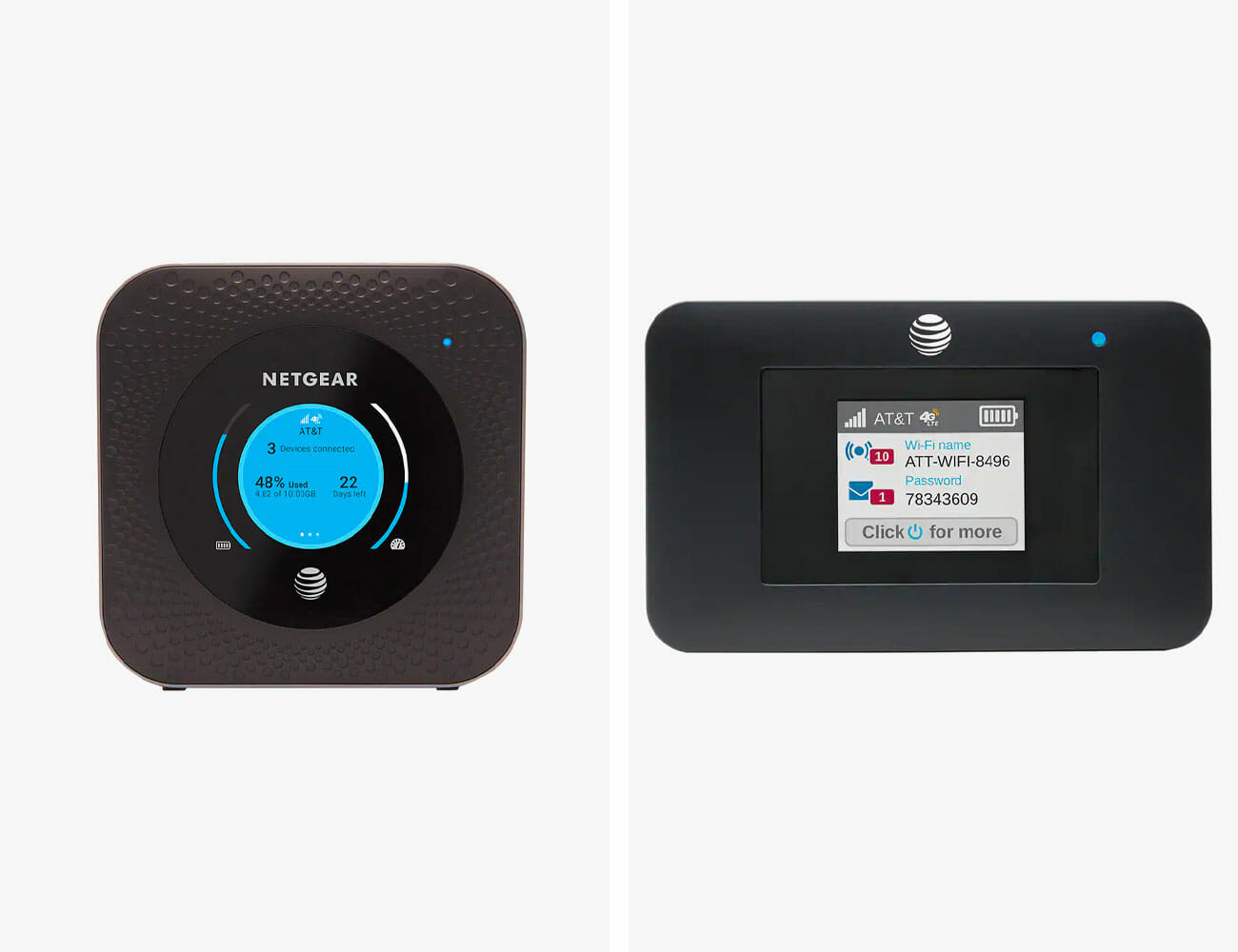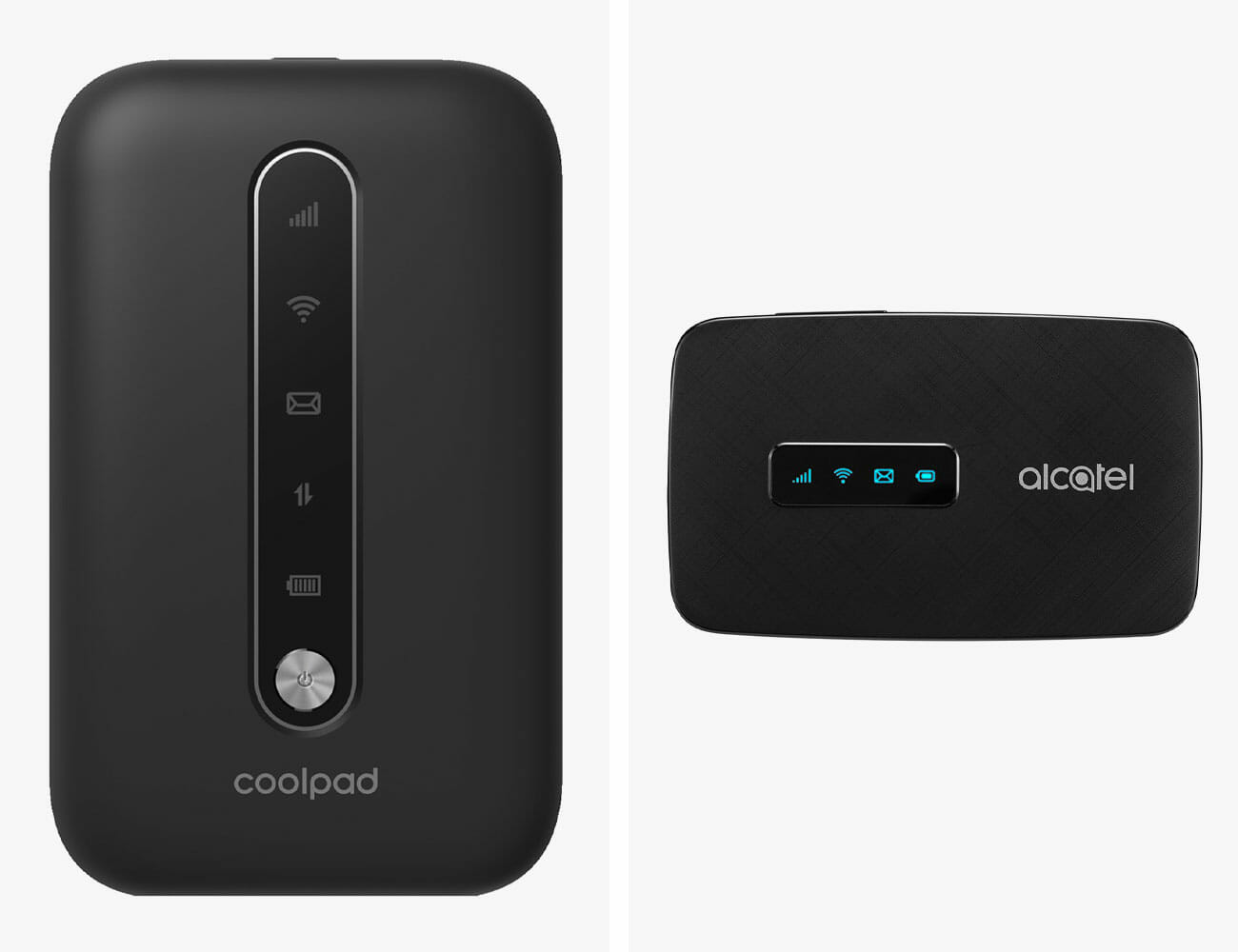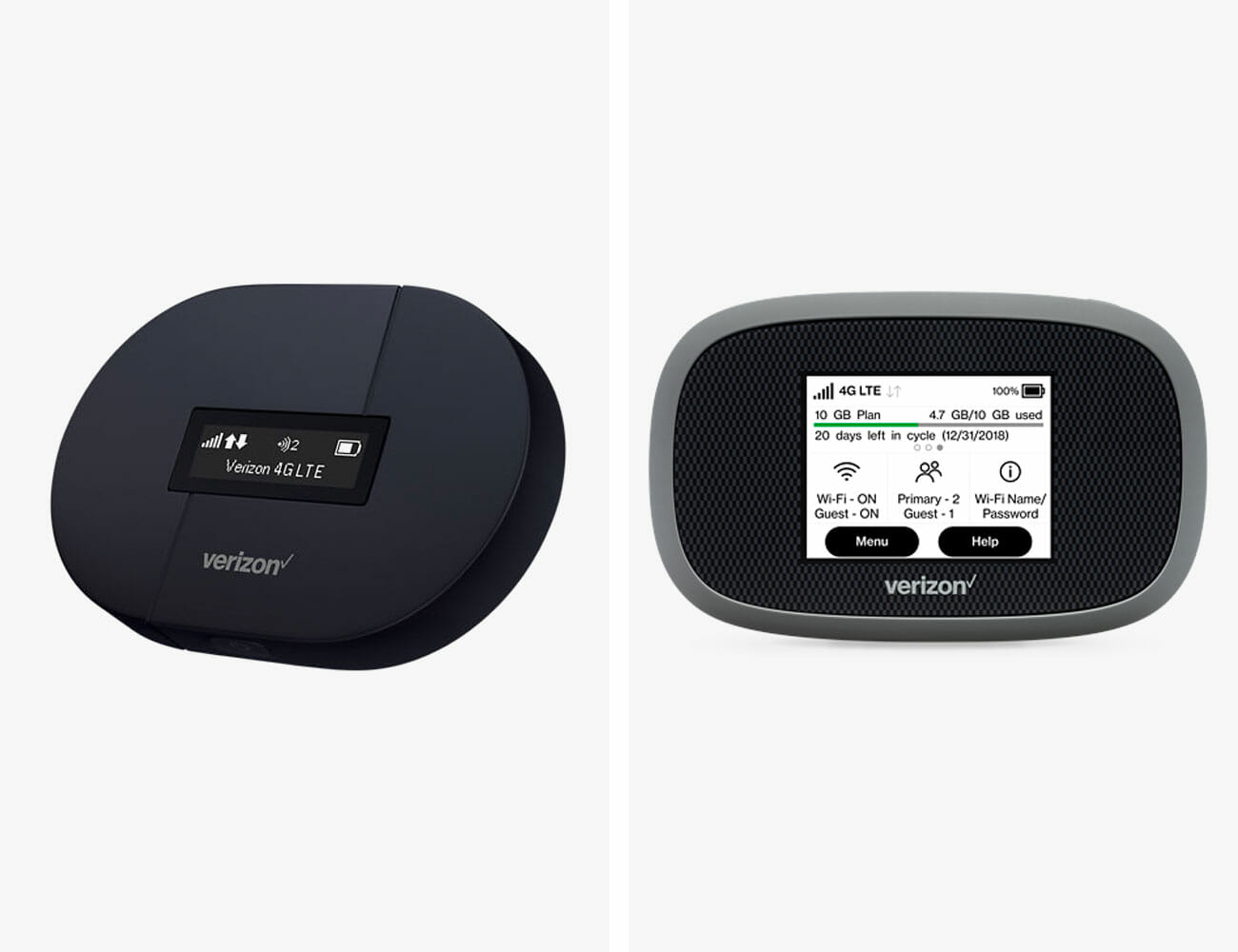When you’re away from home, are you tired of connecting to public wi-fi that’s slow, unreliable and insecure? Then bring your own. A mobile hotspot can deliver a strong, fast and secure online connection just about wherever you go. Like a mobile phone, but without the ability to make calls, a mobile hotspot is all about data. It works by taking an LTE connection and converting it into a wi-fi signal that your laptop or smartphone can use.
Most mobile hotspots are small enough to fit your pocket, and, with a battery life that can last a full day, they’re great for anybody who wants internet access while at the beach or on a long road trip. Maybe the best feature of mobile hotspots is security; its wi-fi network is protected with WPA-2 encryption, making it just as secure as any home router. Most public wi-fi networks, like at a coffee shop or an airport, aren’t nearly that safe. Or as reliable.
The Pros and Cons of Using Your Smartphone As a Hotspot
Of course, there’s an alternative to buying a mobile hotspot — and that’s just using your smartphone. Most of today’s smartphones (and tablets, if they have LTE) can be converted into a temporary mobile hotspot, which is probably the better option for the occasional user. It doesn’t require buying any new hardware, so it’s cheaper up front, and it consolidates everything into one monthly bill. It various between smartphones, naturally, but using your smartphone as a mobile wi-fi hotspot is pretty easy: go to Settings app > Cellular > Set Up Personal Hotspot. You’ll then see a screen showing the name of the hotspot’s network and the password to access it. Easy.
That said, even though most of today’s smartphones can be converted into a hotspot, some networks charge you extra to use it as such. For instance, AT&T does not allow hotspotting with its Unlimited plan while Verizon does. T-Mobile and Sprint allow it with their One Plan and Unlimited plan but with data restrictions; Sprint allows 10GB per month while T-Mobile allows 20GB per month.
A dedicated mobile hotspot has its advantages over a smartphone hotspot. There’s no risk of going over your cellular data limit or reducing your phone’s battery life. It can provide greater wi-fi range and more devices can connect to it for internet access. So, if you travel domestically a lot, for work or pleasure, and don’t want to rack up an absurd data bill, investing in a mobile hotspot makes a lot of sense.
| | |
What About Traveling Abroad?
If you’re wondering if you can take a mobile hotspot abroad, or turn your smartphone in a hotspot while abroad, the answer is “yes” — but there are a lot of restrictions, and they vary from plan to plan (and there are a lot of plans). Some, like Verizon and T-Mobile, provide a modest data allowance overseas. Verizon allows 500MB a day while T-Mobile allows 1GB a month of international data and hotspot activity with its One Plan.
On the other hand, other international plans require additional costs — some as exorbitant as $15 per megabyte. Some carriers offer unlimited international plans for $95 a month. Others charge on a per megabyte basis for international use. For instance, AT&T charges $10 per gigabyte. Sprint requires both an international add-on plan of between $10 and $50 a week, depending on where you’re going, as well as $3 per gigabyte for hotspot (or tablet) data. To further confuse matters, there are pre-paid hotspot plans that can and cannot include international access.
The bottom line is that international hotspots are more complicated, so you want to check with your carrier beforehand.
How to Pick the Right Hotspot
For those interested in a mobile hotspot, you want to start with the network. Instead of the optimistic coverage maps of the networks, I use the OpenSignal app to show where the networks are strongest and weakest. If you live in a city or on either coast, you’re likely set because these areas are well covered by the four of the national networks. The Plains states and the southwest have lots of gaps, though.
Next, pick the hardware from the network’s offerings. The key factors are size, weight, battery life, its data screen and whether it uses both the 2.4- and 5GHz bands of wi-fi spectrum for top throughput. Some add special features, like a firewall or common storage area for sharing anything from cat videos to the latest Kendrick Lamar song.
The Carriers
The minireviews that follow are arranged by the service provider and include everything needed to pick the right hotspot. Everyone is different but there’s hotspot for every need.
AT&T

AT&T offers several mobile hotspot options to choose from. The Unite Express 2 is the hotspot for those who like to travel light, while the Netgear Nighthawk is a heavyweight due, with a huge 5,400mAh battery, which is good for up to 24 hours of use. The Nighthawk also has the ability to fast charge, thanks to its Quick Charge 2.0 AC adapter, which is ideal for anybody on the move. By contrast, the Unite Express 2 has a 2,930 mAh battery that offers around 10 of continuous use.
The two hotspots broadcast high-speed dual-band 802.11ac wi-fi signals for up to 15 users (for the United Express 2) or 20 users (for the Nighthawk). Both AT&T hotspots have bright color LCD screens that put battery level, connection bars and how many devices are connected in your face. The Unite Express 2 sells for $125 (or $6.25/month for 20 months), while the Nighthawk Router goes for $200 (or $10/month for 20 months). Whichever you choose, you’ll need to pay between $15 (for 250MB) and $70 (for 15GB) a month for AT&T service, making it much more expensive than Sprint’s generous $50 50GB plan.
The Options
Best for Lightweight Travelers: Unite Express 2 ($125)
Best for the Power User: Netgear Nighthawk ($200)
Sprint

Sprint’s LTE network may not be the most widespread or advanced of America’s Big Four carriers, but its data plans are the best bargain. Its two hotspots, the Franklin R850 and Franklin R910, are the same size and weight, and they’re able to transmit strong wi-fi signals and can connect 10 devices.
The two hotspots are different because of the R910 sports a better, brighter display (color, OLED) that shows signal strength, battery status and whether data is moving. The R850 has a tiny monochrome strip screen that just shows small icons. The R910 has a slightly bigger battery that can power it for up to 12 hours, while the R850 is good for about 10 hours. At $180 (or $7.50/month for two years) for the R910 and $144 (or $6/month for two years) for the R850, they are at least twice the cost of the T-Mobile hotspots. That said, the Sprint network is for bargain hunters with two simple and inexpensive service plans: a basic $30 plan offers 10GB a month and a high-end $50 plan provides 50GB a month plan, making Sprint’s rock-bottom pricing a must-have for data hogs.
The Options
On a Budget: Franklin R850 ($144)
If You Need a Touchscreen: Franklin R910 ($180)
T-Mobile

With two $72 mobile hotspots, T-Mobile offers hardware at about half the price of the others, but its data plans make up for it. The Alcatel Linkzone is smaller and lighter than the Coolpad Surf, but each device has a thin strip display with tiny icons that show the hotspot’s signal strength, battery life and other operating parameters. They each can link up to 15 devices, but only use wi-fi’s slower 2.4GHz band, cutting into the delivered bandwidth.Neither are marathoners, though, with the Linkzone’s 1,800 mAh battery pack rated by T-Mobile to remain online for upwards of seven hours while the Coolpad Surf’s 2,150 mAh battery is good for only 5.3 hours.
The two hotspots distinguish themselves with their special features. The Linkzone hotspot includes the luxury of 8GB of storage space that connected systems can use to stash a variety of files, making it great for heavy downloaders. On the other hand, the Coolpad Surf includes a firewall that allows port forwarding for the security-conscious crowd. At $72 each, or $3/month for two years, both are a great value. T-Mobile has six data increments from 2GB per month for $20 to 22GB for $95, making it much more expensive to use than Sprint’s service.
The Options
Best for Secure Use: Coolpad Surf ($72)
Best for Sharing Files: Alcatel Linkzone ($72)
Verizon

The Ellipsis Jetpack MHS900L and Jetpack MiFi 8800L are able to tap into Verizon’s Advanced LTE network and deliver 50-percent higher internet speeds in 450 cities across the US. They’ll provides normal LTE speeds in other places. The Jetpack MiFi 8800L is the slightly bigger of the two with a 4,400mAh battery pack that, according to Verizon, can power it for up to 24 hours. By contrast, the Jetpack MHS900L has 2,100mAh capacity and should give you around 10 hours of use.
The MiFi 8800L can utilize both the 2.4- and 5GHz wi-fi transmission bands. The other advantage is its 2.4-inch touchscreen, which makes the hotspot easy to interact with. By contrast, the MHS900L has a 1.3-inch strip screen and only transmits on the slower 2.4GHz channel. Selling for $200 and $150, respectively, the MiFi 8800L and MHS900L can be had for $100 and $30 upfront with a two-year service contract. Verizon offers freedom of choice 16 different plans that dial in the right monthly data limit. In addition to a $20 per month line access fee, the hotspot plans range from 2GB for $20 a month to a whopping 100GB per month for $710. This makes Verizon hotspots potentially the most expensive to use but is the ticket for those who need speed.
The Options
Best for Personal Use: Verizon Ellipsis Jetpack MHS900L ($150)
Best for High Speeds: Verizon Jetpack MiFi 8800L ($200)

